To lock fragrance oils in your soap, start by carefully measuring usage rates – 0.7 oz per pound for cold process and 0.3 oz for melt and pour. Add white kaolin clay (1/2 to 2 tbsp per pound) to anchor scents, and maintain temperatures between 100-120°F during fragrance addition. Store your soaps in a cool, dry place away from sunlight, and consider liquid discounting to achieve stronger scent profiles. These proven techniques will help you master the art of fragrance retention.
Understanding Fragrance Oil Usage Rates and Concentrations
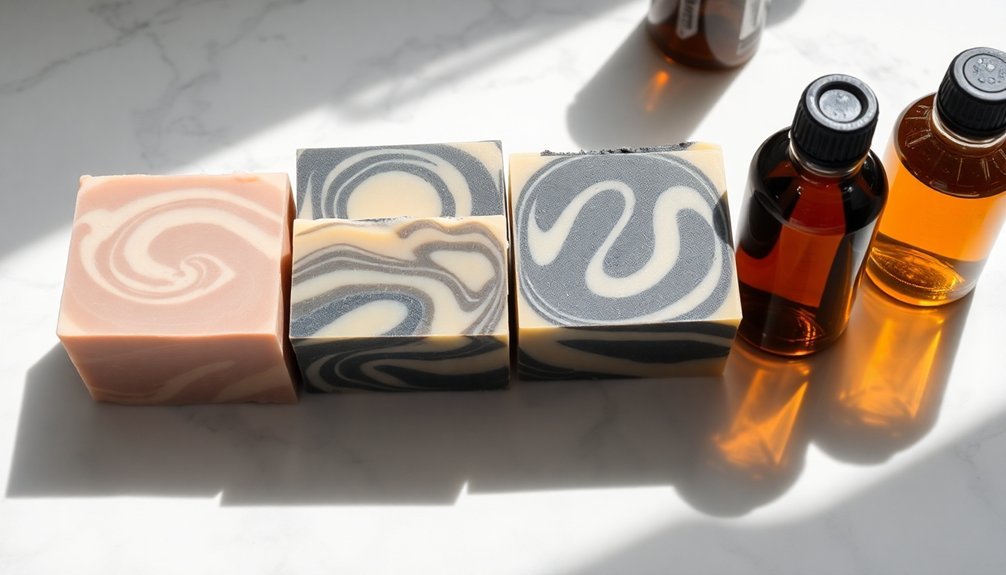
Three key factors determine how well fragrance oils perform in your soap: usage rates, concentration accuracy, and proper measurements.
When you make soap, understanding the correct usage rate is essential. Cold process soap allows for higher concentrations at 0.7 ounces per pound of oils, while melt and pour soap requires less at 0.3 ounces per pound.
However, some fragrance oils, like Cherry Almond, need stricter limits of 0.2 ounces per pound to prevent skin reactions.
To maximize scent retention, you'll want to use a scale rather than volume measurements. This guarantees precise fragrance oil concentrations during the chemical reaction process.
Start with small 1-pound test batches to find your ideal scent strength, and consider liquid discounting to help lock in those fragrance oils more effectively.
Anchoring Techniques With Clay and Natural Fixatives

Beyond precise measurements, natural anchoring agents can dramatically improve fragrance retention in your soaps. White Kaolin Clay stands out as a premier fixative, effectively absorbing fragrance oils while stabilizing them throughout the curing process.
You'll want to use 1/2 to 2 tablespoons per pound of oils to anchor fragrances properly. For best results, mix your fragrance oils with kaolin clay before adding them to your soap batch. This protective step shields the scent during saponification.
Don't overlook natural alternatives like cornstarch or arrowroot powder as fixatives – they're effective at 1/4 to 1/2 teaspoon per pound of carrier oil. You can also enhance scent retention by strategically combining light and heavy notes – try pairing citrus fragrances with earthy bases like patchouli or sandalwood for lasting results.
Temperature Control During Fragrance Addition
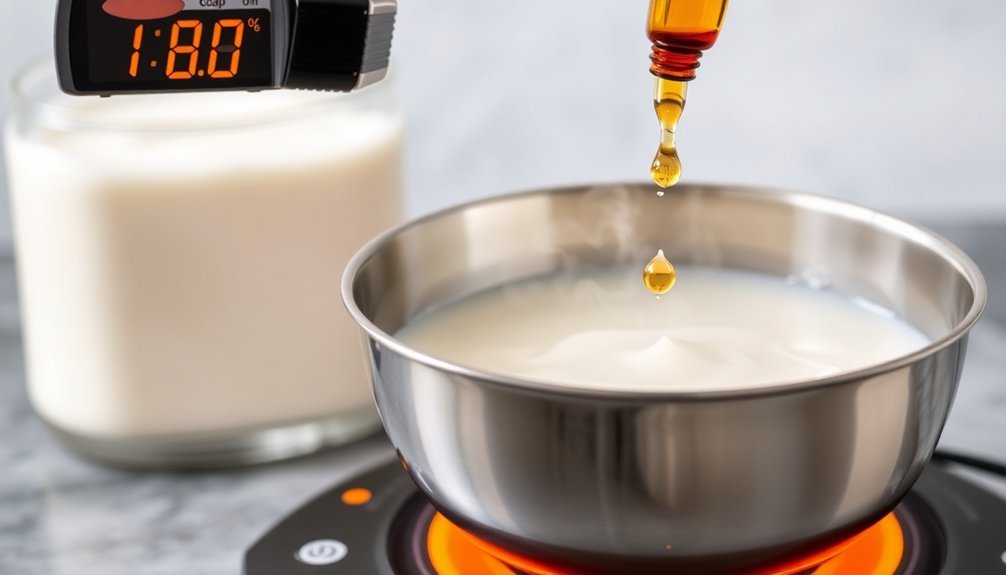
While many soap makers focus on ingredient ratios, temperature control plays an equally essential role in locking in fragrances. You'll achieve better scent retention by adding fragrance oils between 100°F to 120°F, as higher temperatures during saponification can cause your oils to evaporate or degrade.
| Temperature Stage | Action | Result |
|---|---|---|
| Above 120°F | Fragrance addition | Scent degradation |
| 100°F-120°F | Fragrance addition | Ideal retention |
| Below 100°F | Fragrance addition | Possible trace issues |
Keep monitoring your soap's temperature with a thermometer during the trace stage. You don't want to add fragrances too early or late, as this can affect both scent retention and soap consistency. By maintaining precise temperature control throughout the process, you'll prevent common issues like ricing while maximizing your fragrance's staying power.
Strategic Storage Methods for Scent Preservation
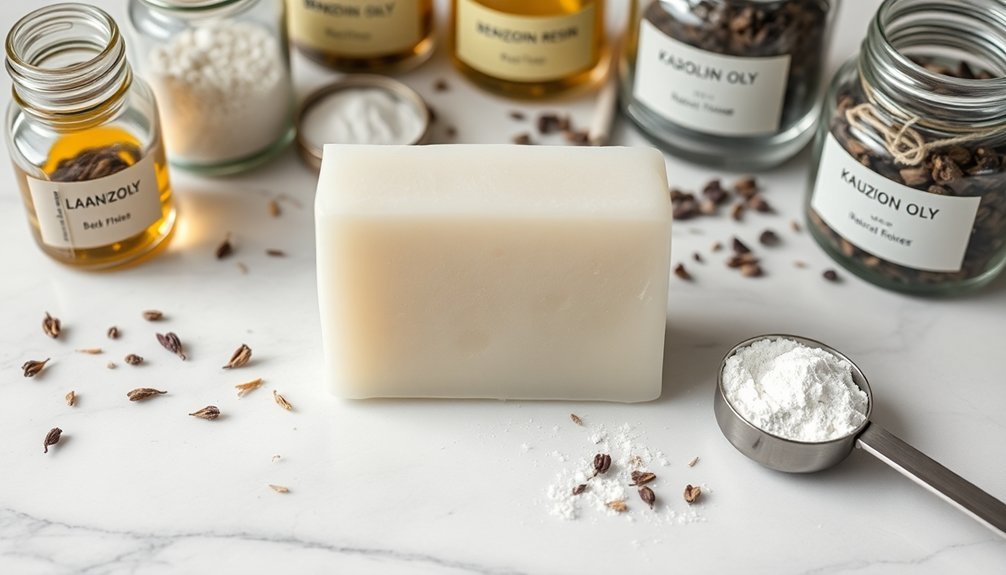
Once you've mastered the art of adding fragrance oils at ideal temperatures, proper storage becomes essential for preserving your soap's scent.
You'll need to cure your soap in a cool, dry area away from direct sunlight to maintain fragrance integrity.
To enhance scent retention during the curing process, place a cotton ball soaked in fragrance oils near your soap without making direct contact.
A simple fragrance-soaked cotton ball placed near curing soap helps lock in essential scents without direct contact.
Keep a close eye on your soaps as they cure, ensuring the environment stays controlled for maximum fragrance development.
When your soap has finished curing, store it in airtight containers or wrap it in biodegradable packaging to protect it from air and light exposure.
Remember to use only tested and approved fragrance oils for soap-making to prevent unwanted reactions that could compromise your soap's lasting scent during storage.
Liquid Discounting for Enhanced Fragrance Retention
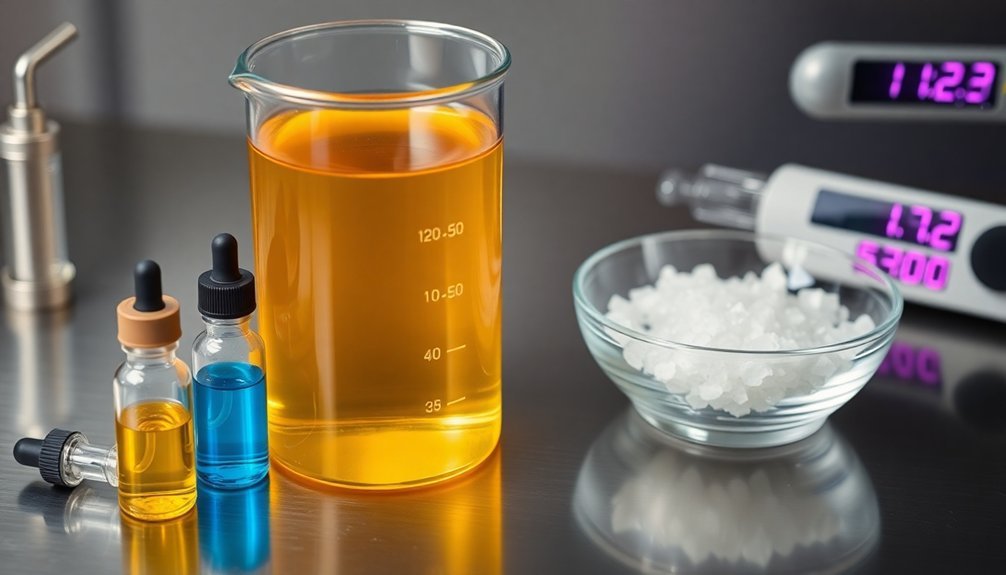
Proper storage methods set the foundation for scent preservation, but liquid discounting takes fragrance retention to the next level. You'll achieve stronger scent profiles in your soap project by reducing the liquid content and maintaining a lye concentration between 33-40%.
| Technique | Benefit |
|---|---|
| Higher Lye Concentration | Less fragrance evaporation |
| Kaolin Clay Addition | Enhanced anchoring fragrances |
| Combined Methods | Maximum scent retention |
When you're working with fragrance oils, remember that less liquid means less evaporation during curing. For best results, experiment with different liquid discounting levels while combining this technique with other methods like kaolin clay. You'll find that this strategic approach helps lock in those precious fragrances, ensuring your soap maintains its delightful scent long after production.
Frequently Asked Questions
How Do You Anchor Scent in Soap?
You'll anchor soap scents by pairing light fragrances with heavy base notes like patchouli, adding kaolin clay slurry, mixing oils with starch powders, and incorporating fragrances at lower temperatures during soap-making.
How to Keep Fragrance in Soap?
You'll keep fragrance in soap by adding kaolin clay, using starch powders, anchoring light scents with earthy ones, blending at lower temperatures, and following recommended fragrance oil rates per pound of oils.
How Do You Lock in Fragrance?
You'll lock in fragrance by adding kaolin clay, mixing with starch powders, anchoring with earthy scents like patchouli, and working at lower temperatures. Always use a fragrance calculator for proper measurements and safety.
How to Make Fragrance Last Longer in Soap?
You'll get longer-lasting fragrance by adding kaolin clay, mixing scents with cornstarch, using low-evaporation oils like patchouli, blending at cooler temperatures, and curing your soap in a cool, dark place.
In Summary
You've now got the essential tools to make your fragrance oils last longer in soap. By paying attention to usage rates, incorporating natural anchors, managing temperatures, storing properly, and mastering liquid discounting, you'll create soaps with lasting scents that your customers will love. Put these techniques into practice, and you'll see the difference in how well your fragrances hold up over time.

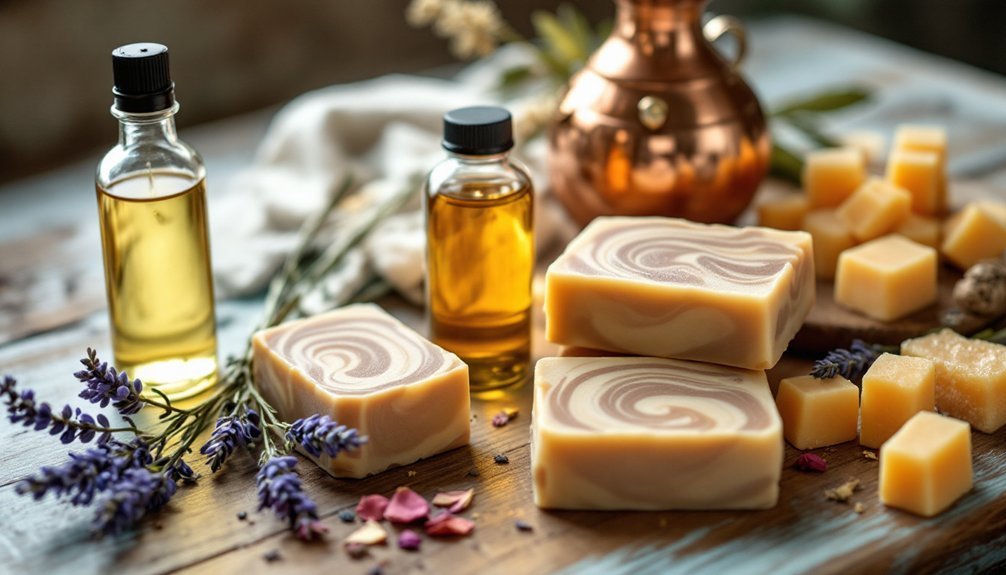



Leave a Reply